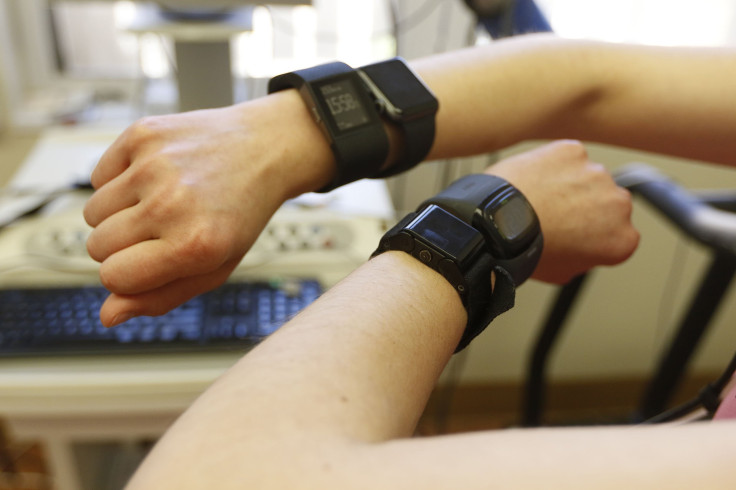Wearable Tech: Fitness Trackers, Like Apple Watch And Fitbit, May Give Wrong Number Of Calories Burned

Many of us depend on wearable technology to track our fitness progress, but think twice before you rely on it for certain health information. While it may accurately monitor your heart rate, the number of calories it says you burn are probably far off, according to new research.
In a study, conducted at Stanford University, researchers analyzed data from seven popular commercial devices: Apple Watch, Basis Peak, Fitbit Surge, Microsoft Band, Mio Alpha 2, PulseOn, and the Samsung Gear S2.
Read: 10 Fitness Trends For 2017: Wearable Technology Takes The Number 1 Spot
They found that nearly all of the devices did a good job of measuring heart rate during cycling and showed an error rate of less than 5 percent. Only one device, the Samsung Gear S2, showed a slightly larger error rate — 5.1 percent. But when it came to counting calories burned, all of the devices were inaccurate. Even the most accurate device was off by an average of 27 percent. For an average person using the device for non-medical purposes, the error rate should be kept under 10 percent, study author Anna Scherbina explained in a statement.
“The heart rate measurements performed far better than we expected,” said senior author Euan Ashley, “but the energy expenditure measures were way off the mark. The magnitude of just how bad they were suprised me.”
Overall, most devices tended to underestimate energy expenditure, Scherbina told Medical Daily. But, it was different for every subject and acvity performed.
Errors were highest while walking, and for males, greater body mass index, and darker skin tone. The Apple Watch achieved the lowest overall error for heart rate and energy expenditure, while the Samsung Gear S2 showed the highest, the authors note in their paper published in the Journal of Personalized Medicine.
Ashley and colleagues studied data from 60 participants who wore fitness tracker devices while on the treadmill or using a stationary bicycle in the laboratory. The measurements from the wearable devices were then compared to each subject’s heart rate and energy expenditure measured with FDA-approved devices that are considered “gold standard” instruments.
Although the authors couldn’t pinpoint exactly why the devices' energy-expenditure measurements were so inaccurate, the authors explained how each device uses its own algorithm to calculate calories. The individual algorithms aren’t a one-size fits all.
"My take on this is that it's very hard to train an algorithm that would be accurate across a wide variety of people because energy expenditure is variable based on someone's fitness level, height and weight, etc.,” Scherbina said. Whereas, heart rate is based on direct measurements.
In an effort to further research on wearable tech, Ashley’s team created a website that provides access to their raw data and statistical approach. This information will be helpful for other researchers studying the devices. In the near future, the team plans to add a feature to their site that allows the public to upload their personal fitness tracker performance data. Going forward the Ashley and colleagues plan to study how the devices perform in a real-world setting, rather than a laboratory.
The demand for wearable tech doesn’t seem to be fading anytime soon, as the market for these devices is expected to hit over $4 billion in 2017.
See also: How Does Fitness Affect Memory? Brain Structure Linked To Better Fitness And Recall Skills



























